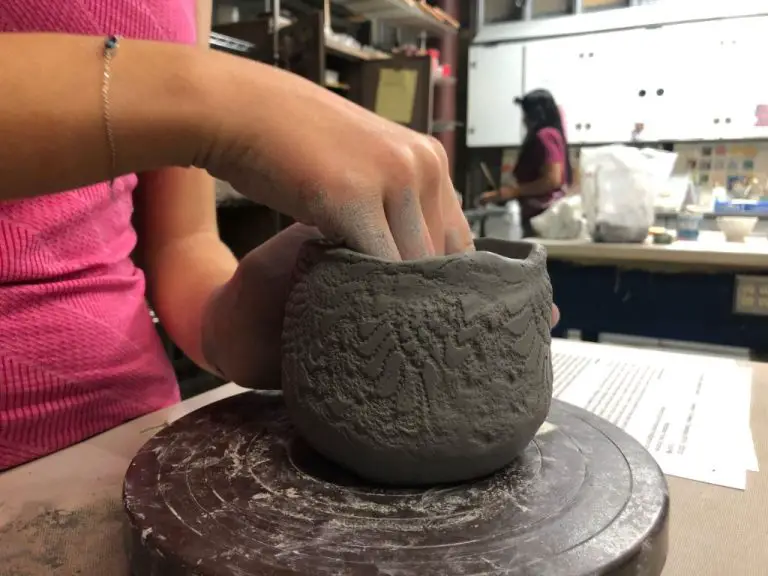How Do You Use Chestnut Spirit Stain?
Chestnut spirit stains are a type of alcohol-based wood stain that have been popular with woodworkers for decades. First developed in the United Kingdom, chestnut stains are known for providing bright, vibrant colors on all types of wood. They penetrate deeply into the wood grain to provide even color and long-lasting protection from UV rays.
Chestnut spirit stains are ideal for staining a wide variety of indoor wood projects. They can be used on furniture, cabinets, turned wood pieces, carvings, and more. Many woodturners favor chestnut stains for adding dramatic colors to bowls, vases, pens, and other lathe work. The stains bring out the natural beauty of the wood grain.
Compared to oil-based stains, chestnut spirit stains dry faster and are easier to apply evenly. They also allow for more customization of color effects. The alcohol base means the stains dry quickly, so multiple coats can be applied in the same day. Chestnut offers a wide palette of stain colors from bold primaries to wood tones.
What is Chestnut Spirit Stain?
Chestnut Spirit Stain is a wood staining product made from an extract of chestnut tree bark. The extract contains tannins, which are acidic compounds that react with the natural tannins in wood. This reaction helps bring out the natural grain pattern and color of the wood.1
Unlike pigmented stains that sit on top of the wood surface, Chestnut Spirit Stains penetrate into the wood. The tannins help provide a warm, brownish tone that accentuates the natural characteristics of the wood. Chestnut Spirit Stains are ideal for achieving an aged, antique look.
Preparing the Wood Surface
Proper preparation is key to achieving an even, consistent stain on your wood project. Before applying Chestnut Spirit Stain, you’ll want to ensure the wood surface is clean, smooth, and free of any defects. Here are the main steps for prepping wood before staining:
Sanding
Sand the wood thoroughly with gradually finer grit sandpaper, progressing from coarse 80-100 grit paper to finer 150-220 grit. Always sand in the direction of the wood grain. This removes any rough spots and opens the pores of the wood so the stain can penetrate evenly. Sand all surfaces that will be stained. Pay extra attention to sanding joints and edges smooth.
Cleaning
After sanding, wipe away all dust from the wood using a dry tack cloth or microfiber cloth. Make sure to get into crevices and corners. Any dust left on the surface can cause blotchiness when staining. You can also lightly dampen a clean rag with mineral spirits and wipe down the wood to remove residual oils or grease. Allow the wood to fully dry before applying stain.
Filling Cracks and Holes
Inspect the wood and use a wood filler, putty, or spackle to fill any cracks, holes, or defects exposed after sanding. Let the filler dry completely as directed. Sand smooth and wipe clean. Filling defects will help achieve an even stain application.

Applying the Stain
There are two main methods for applying Chestnut Spirit Stain to wood: using a brush or a rag. Both have their advantages and disadvantages when it comes to controlling the depth of color.
Applying the stain with a brush allows you to coat the surface evenly and get into grooves and crevices. Use a high-quality brush with soft bristles. Load the brush up well and apply in the direction of the wood grain, being careful not to cause drips or sags. Letting the stain pool in certain areas will create darker spots.
Using a rag gives you more control over the depth of color. Dip the rag lightly into the stain and wipe gently across the wood. Apply in thin layers, reapplying to deepen the color gradually. Wiping perpendicular to the wood grain initially can help regulate absorption. Rags allow for subtle effects like rag-rolling or color washing.
No matter the application method, always test on scrap wood first. Layer multiple thin coats to build the shade slowly. Remember you can always make it darker but not lighter. Allow each layer to dry fully before adding another.
Sealing and Protecting
Once the stain has fully dried on the wood, it’s important to apply a sealer or topcoat for protection. This will seal in the color and provide a barrier against damage from moisture, UV rays, and normal wear and tear.
There are several options for topcoats to use over chestnut spirit stain:
- Polyurethane – This clear topcoat provides excellent durability and protection. Oil-based polyurethane forms the most protective barrier.
- Shellac – Brings out warm tones in the stain. It dries quickly but requires more frequent reapplication than polyurethane.
- Lacquer – Creates a durable finish while allowing the wood grain to show through. It dries rapidly.
- Wax – Provides minimal protection from moisture but leaves the wood feeling natural. Multiple coats are needed for better protection.
Be sure to check the manufacturer’s recommended drying time between coats. Most topcoats will be dry to the touch within 1-3 hours but may take over 24 hours to fully cure and become scratch resistant.
Applying 2-3 thin coats of a topcoat like polyurethane will provide the best seal for chestnut spirit stained wood. Lightly sanding between coats with 220 grit sandpaper will produce the smoothest finish.
Achieving Different Looks
One of the great things about chestnut spirit stain is how versatile it is for achieving different looks. Here are some techniques to get unique results:
Using Multiple Coats
Applying multiple thin coats of chestnut stain will create a richer, deeper color. Each coat will allow more pigment to penetrate into the wood. Going from one coat up to three or four coats will make the color much darker andaccentuate the wood grain.
Adding Gray/Black Pigments
You can mix in small amounts of black, gray, or ebony pigments into the chestnut stain to create an antiqued, weathered effect. Start with a ratio of 10:1 stain to pigment and test on scrap wood. Adjust the ratio as needed. The gray pigments will tone down the redness for a more neutral look.
Contrasting with Other Stains
Using chestnut stain alongside lighter stains like pine or birch allows for bold contrast effects. Try staining most of the surface with chestnut and then use pine to highlight edges or sections. You can also use multiple layers, like pine over chestnut, to make part of the wood pop.
Maintenance
Maintaining woodwork stained with Chestnut Spirit Stains requires proper cleaning and occasional refinishing to keep it looking its best. Use a soft cloth dampened slightly with warm water to gently wipe the wood, avoiding excessive moisture. For tougher dirt or grime, use a mild detergent diluted in water. Always wipe in the direction of the wood grain.
Over time, the stain’s color intensity will fade, especially in areas exposed to lots of sunlight. When this happens, consider refinishing the wood with another application of Chestnut Spirit Stain in the same color. Lightly sand and clean the wood first to help the new stain adhere and absorb evenly.
For spot touch-ups, clean the damaged area thoroughly and use fine grit sandpaper to smooth the wood fibers. Carefully re-apply Chestnut Spirit Stain to the spot with a small paintbrush, following the wood grain direction. Allow it to dry completely before sealing or applying topcoats. The spot should blend in with the surrounding stained wood.
With proper care and maintenance, Chestnut Spirit Stained wood can retain its rich color and finish for many years before needing a full refinish.
Safety Considerations
When using chestnut spirit stains, it’s important to take proper safety precautions. Chestnut spirit stains contain solvents that can be harmful if used incorrectly.
Make sure to use the stains in a well-ventilated area. Apply the stains outdoors if possible, or in a room with open windows and fans to circulate fresh air. Solvent vapors can build up quickly in enclosed spaces and pose health risks if inhaled in high concentrations. Take breaks from staining to get fresh air.
Avoid contact with skin and eyes when applying chestnut spirit stains. Wear gloves and eye protection to prevent accidental exposure. If the stain does get on your skin, wash immediately with soap and water. For eye contact, flush eyes with plenty of water for 15 minutes and seek medical attention if irritation persists.
Always read the safety instructions on the product labeling and follow any precautions noted. With proper usage and ventilation, chestnut spirit stains can be used safely and effectively.
Costs
Chestnut spirit stain is a reasonably priced option for wood staining. Expect to pay around $25-40 per gallon. Chestnut spirit stain is more affordable than oil-based stains, with oil stains ranging $35-60 per gallon. However, chestnut spirit stain is slightly more expensive than water-based acrylic stains, which can cost $15-30 per gallon.
The cost difference between chestnut spirit stain and other products comes down to the ingredients and manufacturing process. Chestnut stain uses alcohol and resin as main ingredients, requiring more steps to manufacture than water-based stains, but less than oil-based options. When considering cost, also factor in that chestnut stain may require less product to cover the same area compared to water-based acrylics.
Overall, chestnut spirit stain hits a nice price point between higher-end oil-based stains and very affordable water-based acrylics. For many woodworkers, the medium price is worthwhile for the ideal blend of affordability and quality staining ability that chestnut stain provides.
Conclusion
In summary, Chestnut spirit stain offers a vibrant range of colors and an ability to mix tints to achieve the perfect shade for your wood project. Its quick drying alcohol-based formula penetrates deep into the wood grain to provide long-lasting color that won’t fade over time. With proper preparation like sanding and cleaning the wood first, Chestnut spirit stains can be easily applied by brush, cloth or spray. The staining effect ranges from transparent tints to solid opaque colors depending on the number of coats applied.
Chestnut spirit stain is ideal when you want to enhance the natural grain of light colored woods like maple or birch (Woodturner’s Catalog). Its bright colors make it a popular choice for arts and crafts projects. However, multiple thin coats may be needed for large surface areas to avoid an uneven finish. Always test on scrap wood first to ensure you achieve the desired color.
With vibrant colors that penetrate deep into the wood, Chestnut spirit stains offer a beautiful way to change the look of your woodworking projects. Just be sure to properly prepare the surface first for best results.





